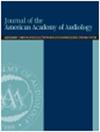COVID-19 and Deafness: Impact of Face Masks on Speech Perception.
IF 1
4区 医学
Q3 AUDIOLOGY & SPEECH-LANGUAGE PATHOLOGY
引用次数: 4
Abstract
BACKGROUND The COVID-19 pandemic has made wearing face masks a common habit in public places. Several reports have underlined the increased difficulties encountered by deaf people in speech comprehension, resulting in a higher risk of social isolation and psychological distress. PURPOSE To address the detrimental effect of different types of face masks on speech perception, according to the listener hearing level and background noise. RESEARCH DESIGN Quasi-experimental cross-sectional study. STUDY SAMPLE Thirty patients were assessed: 16 with normal hearing [NH], and 14 hearing-impaired [HI] with moderate hearing loss. DATA COLLECTION AND ANALYSIS A speech perception test (TAUV) was administered by an operator trained to speak at 65 dB, without a face mask, with a surgical mask, and with a KN95/FFP2 face mask, in a quiet and in a noisy environment (cocktail party noise, 55 dB). The Hearing Handicap Index for Adults (HHI-A) was administered twice, asking subjects to complete it for the period before and after the pandemic outburst. A 2-way repeated-measure analysis of variance was performed. RESULTS The NH group showed a significant difference between the no-mask and the KN95/FFP2-mask condition in noise (p = 0.01). The HI group showed significant differences for surgical or KN95/FFP2 mask compared with no-mask, and for KN95/FFP2 compared with surgical mask, in quiet and in noise (p < 0.001). An increase in HHI-A scores was recorded for the HI patients (p < 0.001). CONCLUSION Face masks have a detrimental effect on speech perception especially for HI patients, potentially worsening their hearing-related quality of life.COVID-19和耳聋:口罩对语言感知的影响。
新冠肺炎大流行已使在公共场所佩戴口罩成为一种普遍习惯。一些报告强调,聋人在理解语言方面遇到的困难越来越多,导致社会孤立和心理困扰的风险更高。目的根据听者的听力水平和背景噪音,研究不同类型的口罩对语音感知的不利影响。研究设计准实验横断面研究。研究样本:对30例患者进行评估:16例听力正常[NH], 14例听力受损[HI]伴中度听力损失。数据收集和分析语音感知测试(TAUV)由一名训练有素的操作员进行,在安静和嘈杂的环境(鸡尾酒会噪音,55 dB)下,不戴口罩、戴外科口罩和戴KN95/FFP2口罩,说话频率为65 dB。使用两次成人听力障碍指数(HHI-A),要求受试者在大流行爆发前后完成该指数。进行双向重复测量方差分析。结果NH组与KN95/FFP2-mask组的噪声差异有统计学意义(p = 0.01)。HI组使用外科口罩或KN95/FFP2口罩与不戴口罩相比,使用KN95/FFP2口罩与外科口罩相比,在安静和噪音方面存在显著差异(p < 0.001)。HI患者的HHI-A评分增加(p < 0.001)。结论口罩对言语感知有不利影响,特别是对HI患者,可能会恶化其听力相关的生活质量。
本文章由计算机程序翻译,如有差异,请以英文原文为准。
求助全文
约1分钟内获得全文
求助全文
来源期刊
CiteScore
3.10
自引率
0.00%
发文量
46
审稿时长
6-12 weeks
期刊介绍:
The Journal of the American Academy of Audiology (JAAA) is the Academy''s scholarly peer-reviewed publication, issued 10 times per year and available to Academy members as a benefit of membership. The JAAA publishes articles and clinical reports in all areas of audiology, including audiological assessment, amplification, aural habilitation and rehabilitation, auditory electrophysiology, vestibular assessment, and hearing science.

 求助内容:
求助内容: 应助结果提醒方式:
应助结果提醒方式:


